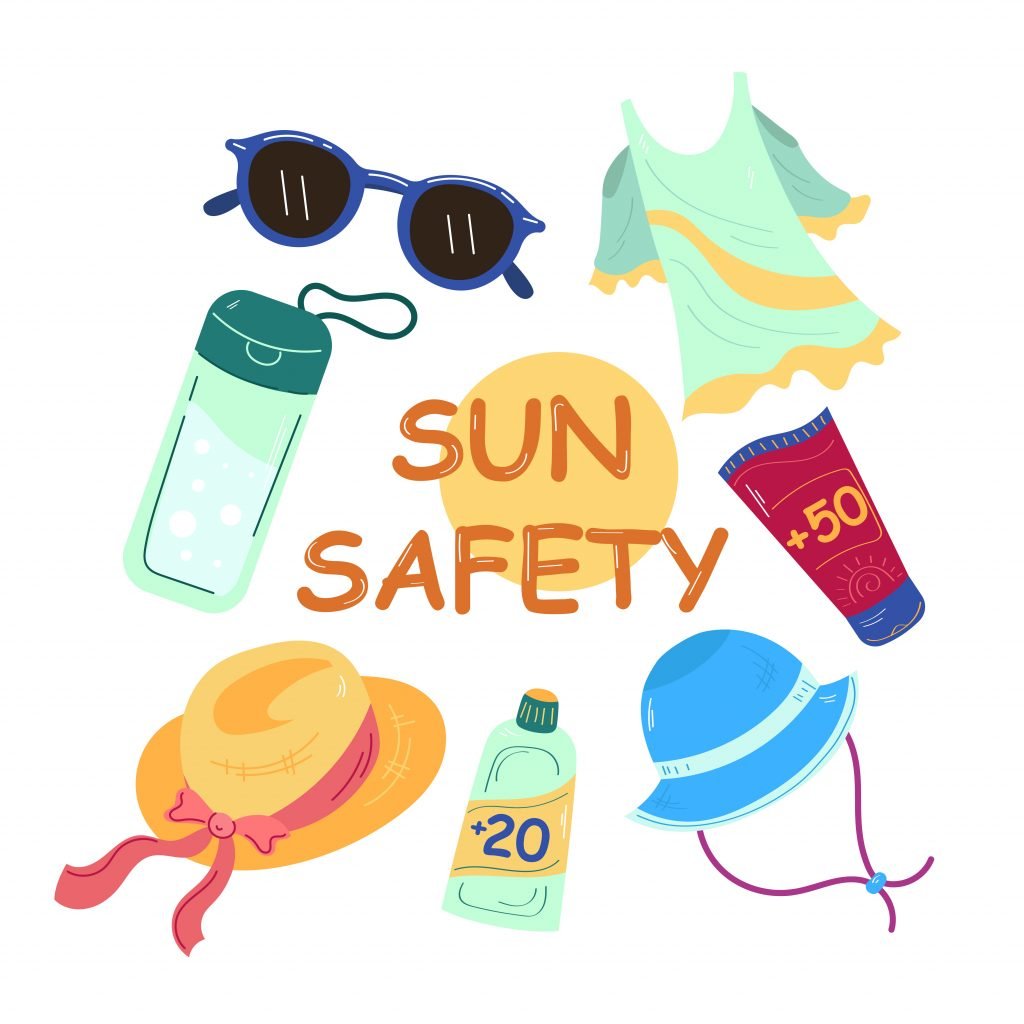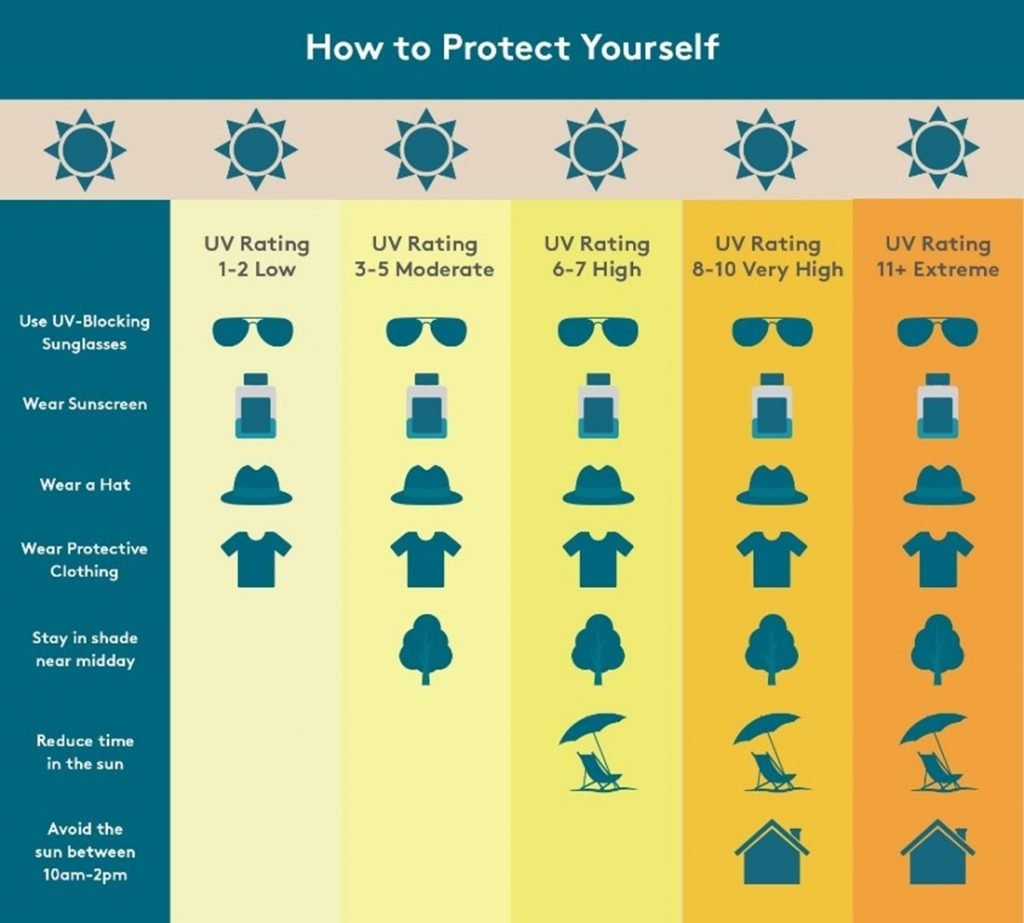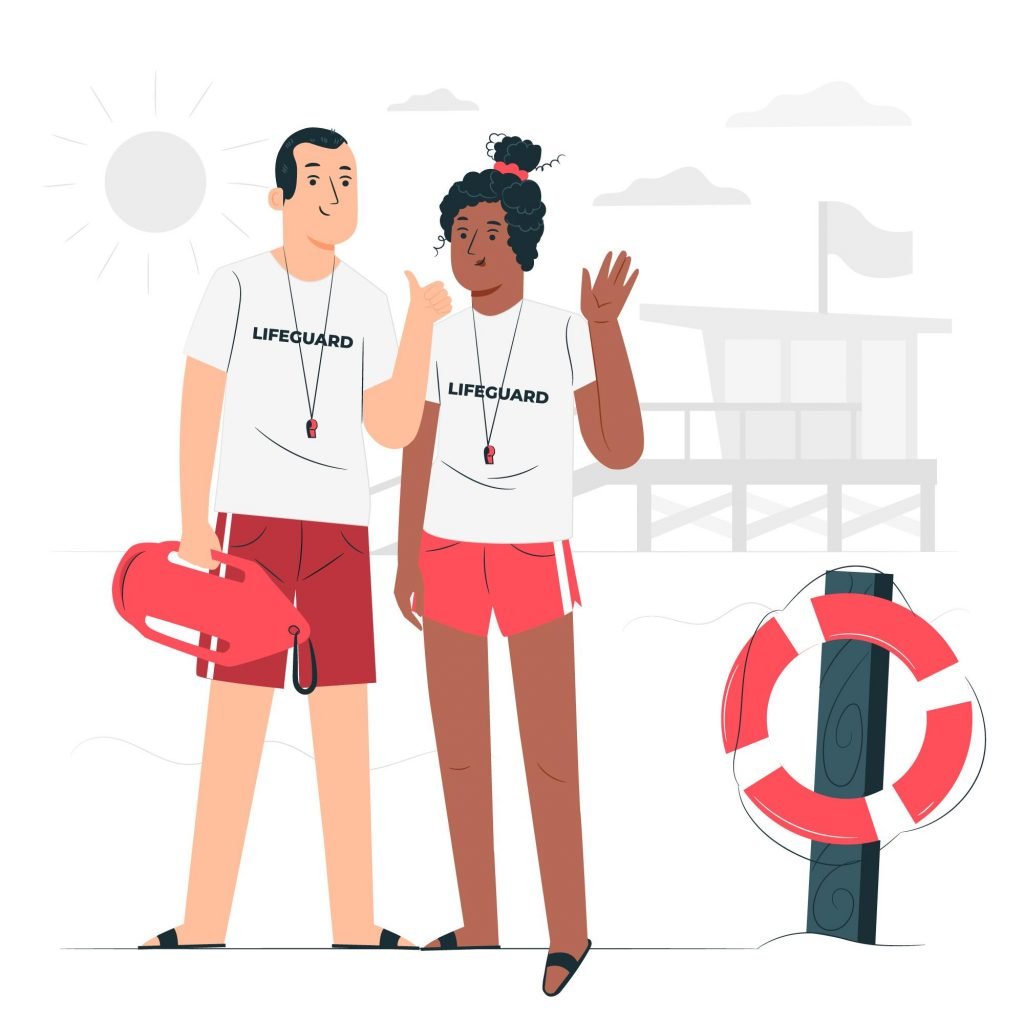As Memorial Day weekend unofficially marks the beginning of summer in the northern hemisphere, HR and wellness professionals can play a crucial role in fostering a safe and healthy workplace during this sun-soaked season. With beach trips, barbeques, and outdoor bonding activities on the horizon, summer introduces unique challenges that demand attention from both employers and employees.
It’s vital to balance embracing the joys of summer and prioritizing employee well-being. This article covers how to educate, empower, and protect employees when it comes to various forms of summer safety.

Pressed for time? Here’s a quick summary…
- Stay safe in the sun by increasing shade, wearing sun-safe attire, applying sunscreen, and being mindful when scheduling outdoor activities.
- Be conscious of heat stroke symptoms, tick-borne illnesses, and employee allergies.
- Prepare an emergency roadside kit for travel and commutes as heat poses additional risks for vehicles.
- Implement additional cooking safety precautions as the risk of food poisoning is higher in the summer than in any other season.
- Ensure employees have strong swimming skills, wear life jackets for boating excursions, and swim under lifeguard supervision.
Sun Safety
During the summer, working, team bonding, or exercising outdoors can be a treat. The sun can boost happiness, reduce stress, and provide a much-needed dose of Vitamin D. However, it’s vital to take safety precautions against harmful exposure to ultraviolet (UV) light.
UV rays have the potential to damage skin cells and increase the risk of skin cancer, even on cloudy or cooler days. Any team can savor the sun’s warmth by embracing sun safety measures while protecting their health.

Shade
Stay in the shade with umbrellas, trees, or other structures for outdoor work tasks or team-building activities to safeguard against sun damage and skin cancer. Remind employees that even in the cool comfort of the shade, they should wear sunscreen and protective clothing.
Sun-Safe Attire
Promote sun-safe attire for outdoor activities, including:
- Protective Clothing: Long-sleeved shirts and pants made of lightweight, tightly woven fabric are optimal to protect against UV rays.
- Hat: Full-brimmed hats that shade the face, ears, and back of the neck are superior to baseball caps for protection. Tightly woven fabric, like canvas, is ideal.
- Sunglasses: Sunglasses that block both UVA and UVB rays offer optimal protection from sun damage and reduce the risk of cataracts.
Sunscreen
Have a readily available supply of broad-spectrum sunscreen in the office, particularly for days with outdoor events on the agenda. Choose formulas with an SPF of 15 or higher and protection from both UVA and UVB rays. Remind employees to reapply every two hours or after swimming or sweating.
Smart Scheduling
Avoid outdoor activities when the sun is at its strongest UV rating and schedule regular breaks to reapply sunscreen, hydrate, and rest in an indoor or shaded area. Utilize the chart below to learn about the various levels of the UV Index and their corresponding recommended protective measures.

Outdoor Safety
Whether embarking on a company retreat or enjoying a picnic, preparing for unforeseen incidents ensures peace of mind and readiness to tackle any issues that may arise. As an HR professional, implementing robust safety measures and providing education are crucial for work-related situations and employees’ personal adventures. With the right preparation, team members can embrace the great outdoors while keeping safety at the forefront.

Heat Stroke
If an employee has a high body temperature, rapid and strong pulse, and/or altered mental status, such as confusion or difficulty walking, it could be a heat stroke—an urgent, life-threatening emergency. This risk is particularly pronounced for manual labor positions who work outdoors during the summer. Immediately dial 911 and focus on cooling the person down by spraying them with cool water, submerging them in water (if they are conscious and capable of assisting), and relocating them away from direct sunlight until further medical assistance arrives.
Ticks
Outdoor company retreats are a great way to connect with nature, but tick-borne illnesses pose a concern. Ensure employees check for ticks after spending time outdoors, particularly in grassy or wooded areas. When removing ticks, use tweezers to grasp the tick as close to its head as possible. Lyme disease is one of the most prevalent tick-borne illnesses, displaying flu-like symptoms such as muscle aches, joint pain, fever, and a bulls-eye rash.
Insect Allergies
Encourage employees to disclose potential allergies to bees or other insects and pests. Ensure they have prescribed medications readily available, such as epinephrine auto-injectors, in the case of an allergic reaction.
Travel Safety
Travel safety is a year-round priority encompassing practices like wearing a seatbelt, staying alert on the road, and checking for vehicle recalls. However, summer introduces additional safety factors to consider. By providing employees with travel safety education for their daily work commutes and potential summer road trips, employers promote a culture of safety and help prevent accidents.

Air Conditioning (AC)
As temperatures climb, the strain on a vehicle’s cooling system also rises. Remind employees to ensure their AC is in top shape before commuting or traveling. The absence of a functional AC is not only uncomfortable, but it can pose serious health risks for those with health concerns or sensitivity to heat.
Overheating Risks
Summer brings a tragic surge in heatstroke incidents among children, often linked to being left alone in vehicles. Remind employees never to leave children alone in a car, even for a short while. Cars can turn into heat traps quickly, and children are more susceptible to heat than adults.
Vehicle Maintenance
Summer heat can hasten the wear and tear of a car’s rubber belts and hoses. Remind employees to check for any bulging, blistering, or cracks in their vehicle parts to prevent issues. Timely replacements and ensuring all connections are secure can ensure safer and smoother rides.
Emergency Roadside Kit
Even the best-maintained vehicle can encounter unexpected issues. Encourage employees to stock their vehicles with an emergency roadside kit that includes:
- Cell phone and charger (wireless charger if available)
- First aid kit
- Water
- Flashlight
- Flares and a white flag
- Jumper cables
- Tire pressure gauge
- Jack (and ground mat) for changing a tire
- Work gloves and a change of clothes
- Basic repair tools and duct tape (for temporarily repairing a hose leak)
- Paper towels
- Nonperishable food and medicines
- Extra windshield washer fluid
- Maps
- Emergency blankets, towels, and coats
Food Safety
The risk of food poisoning is higher during summer than in any other season. Warm and humid conditions create an ideal environment for bacteria to thrive, resulting in rapid growth in food.
Outdoor activities, like picnics, barbecues, and camping trips, also bring a lack of safety controls normally found in a kitchen. Following and educating on safety guidelines allows employees to savor summer flavors with peace of mind.

Cleanliness
Maintaining hygiene is crucial to prevent foodborne illnesses. Remind employees to thoroughly wash their hands with warm, soapy water before food handling and after using the restroom, changing diapers, touching pets, or any other activity that may have caused dirty hands. Ensure a safe water source is available for any outdoor company picnics. If not, bring water, disposable wet wipes, and paper towels for sanitizing hands and surfaces.
Separation
Cross-contamination can result in a foodborne illness. For summertime barbeques, securely wrap raw meats in a cooler to prevent contact with ready-to-eat foods. Plates, utensils, and cutting boards used for raw meat or poultry should be thoroughly cleaned before the following use.
Cooking
For many folks, there’s nothing better than food fresh off the grill during the summer months. A food thermometer is an easily overlooked, yet incredibly useful, tool for outdoor cooking. Despite meat and poultry often browning quickly on a grill, it’s important to confirm they’re thoroughly cooked by checking the internal temperature.
Cooling
Keeping food at safe temperatures is essential to protect against foodborne illness. Store perishables in an insulated cooler filled with ice or frozen water containers. For summer potlucks, remind employees to stash coolers in their vehicle’s coolest spot and relocate to a shaded area upon arrival. Bear in mind, leaving food unrefrigerated for more than two hours, or one hour if above 90 °F (32 °C), can compromise its safety.
Water Safety
As temperatures soar, water activities offer a refreshing avenue for team bonding. While these activities bring enjoyment and camaraderie, HR professionals must be mindful of the potential risks and take precautions to ensure the well-being of employees.

Aquatic Abilities
It should never be assumed that all employees are confident or competent swimmers. Varying experiences with water, cultural backgrounds, or simply a lack of opportunity can all contribute to differing swimming capabilities. Before hosting any events that occur in or around water, offer resources or facilitate opportunities for swimming lessons.
Safety Afloat
If the team is embarking on a boating day, it’s encouraged that employees wear a U.S. Coast Guard-approved life jacket regardless of age or swimming proficiency. Inflatable toys are fun, but they’re no replacement for approved life jackets. Emphasize this equipment’s importance to ensure the team can navigate fun and safety in tandem.
Swim Smart
For a pool or beach day, identify designated areas supervised by lifeguards for swimming. Encourage employees to swim with a buddy for an extra safety layer, especially when swimming in the ocean.
CPR Training
CPR is a skill that could make a life-or-death difference. Offering CPR training and certification empowers team members to respond confidently and effectively during emergencies.












